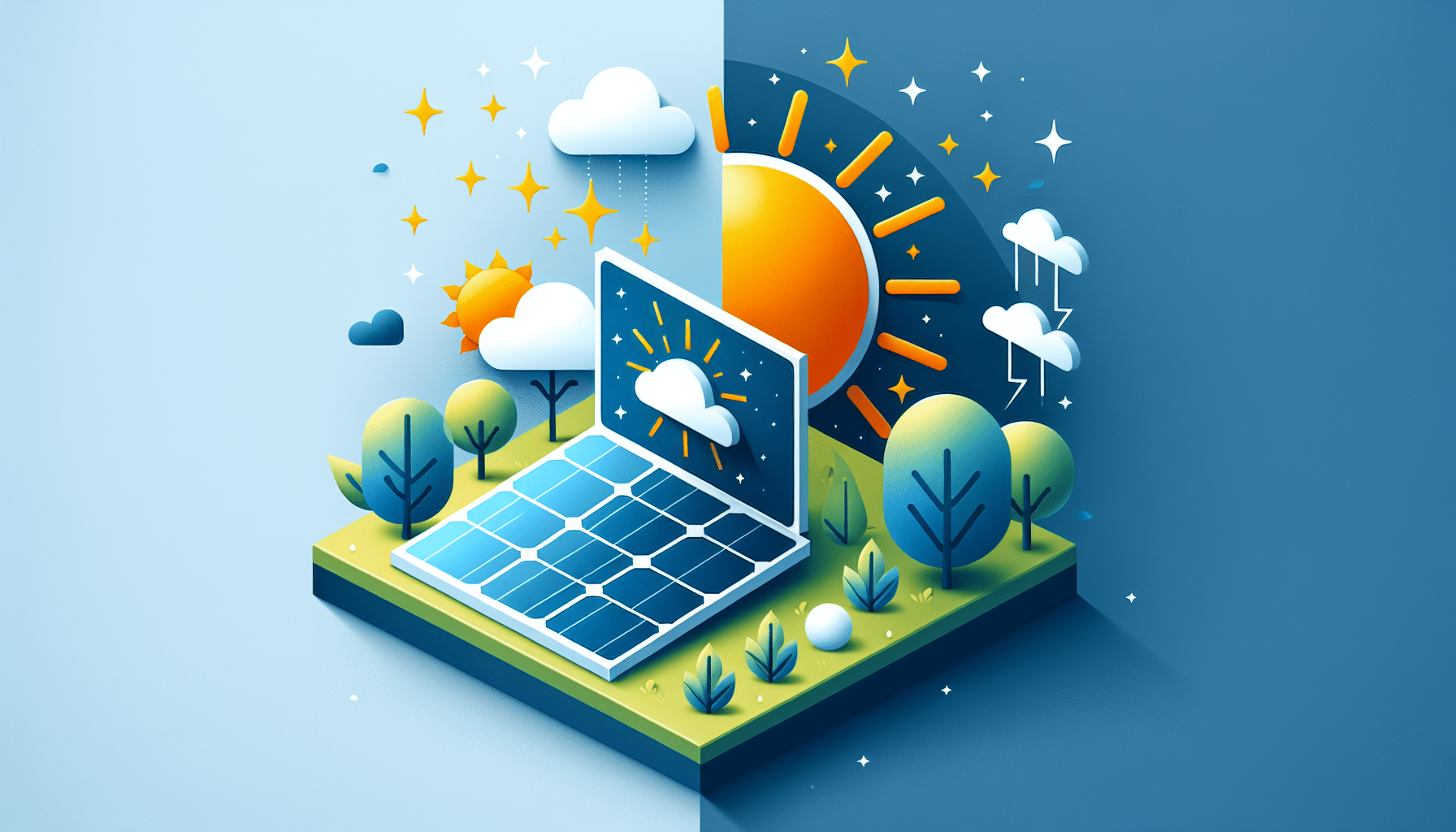Curious about solar power? Discover the pros and cons, from reduced electricity costs and low maintenance to initial expenses and intermittency challenges.
Introduction
Solar power has gained popularity as a clean and renewable energy source, but what exactly are the pros and cons? In this article, we’ll explore three advantages and three disadvantages of solar power.
From reducing carbon emissions and lowering electricity bills to the initial cost and intermittent energy production, we’ll cover both the positive and negative aspects of harnessing the power of the sun.
So, if you’re curious about whether solar power is the right choice for you, keep reading to find out!
Pros of Solar Power
Renewable Energy Source
One of the greatest advantages of solar power is that it is a renewable energy source.
Unlike fossil fuels that rely on limited resources such as coal, oil, and gas, solar energy utilizes the power of the sun, which is an abundant and inexhaustible source of energy.
As long as the sun continues to shine, solar power can be harnessed, making it a sustainable and environmentally friendly option for generating electricity.
Reduced Electricity Costs
Another significant benefit of solar power is its potential to reduce electricity costs.
By installing solar panels on your roof or property, you can generate your own electricity, reducing the need to rely on electricity from the grid.
Generating your own power means you can offset your utility bills and potentially even earn money through net metering programs. This can result in substantial savings over time, making solar power a wise financial investment.
Low Maintenance
Solar power systems require minimal maintenance, which is undoubtedly a plus for homeowners and businesses alike.
Once the solar panels are installed, they generally only require periodic cleaning to ensure optimal efficiency.
Additionally, most reputable solar panel manufacturers offer warranties and guarantees, providing peace of mind that any potential issues will be taken care of.
With low maintenance requirements, solar power systems are a hassle-free way to generate electricity.
Environmentally Friendly
Solar power is renowned for its positive impact on the environment.
Unlike conventional energy sources like coal or natural gas that contribute to greenhouse gas emissions and pollution, solar power produces no harmful pollutants or greenhouse gases during its use.
By relying on the sun’s energy, solar power helps to combat climate change, reduce air pollution, and protect the planet for future generations. Choosing solar power can significantly contribute to a cleaner and greener future.
Job Creation
The growth of the solar power industry has also led to an increase in job opportunities.
From manufacturing and installation to maintenance and sales, the solar power sector has created numerous employment opportunities.
This increase in jobs provides economic benefits to communities and contributes to the overall growth of the economy.
By supporting solar power, you are not only helping to protect the environment but also helping to create jobs and stimulate local economies.
Energy Independence
By harnessing the power of the sun, solar power offers individuals and communities the opportunity to become more energy independent.
Instead of relying solely on utility companies for electricity, solar power allows you to generate your own power on-site.
This level of self-sufficiency offers a sense of security, knowing that you have a reliable source of energy even during power outages or emergencies.
Energy independence also reduces reliance on imported energy sources, providing greater control and stability over your energy supply.

Cons of Solar Power
High Initial Costs
One of the primary drawbacks of solar power is the high initial costs associated with installing a solar power system.
The upfront investment required for purchasing and installing solar panels, inverters, batteries, and other equipment can be substantial.
However, it’s important to consider the long-term financial benefits and potential return on investment.
While the initial costs may seem daunting, the savings on electricity bills and potential government incentives can help offset these expenses over time.
Intermittency and Storage Challenges
Solar power generation is dependent on sunlight availability, which means it is subject to intermittency.
Solar panels generate electricity when exposed to sunlight, and this power generation fluctuates throughout the day and across seasons.
This intermittency poses a challenge to meeting continuous energy demands, especially during periods of inadequate sunlight.
Additionally, storing excess energy generated during peak sunlight hours can be a complex and costly task.
However, advancements in storage technologies are constantly being made, working towards addressing this issue and enhancing the reliability of solar power systems.
Land and Space Requirements
Solar power systems typically require a considerable amount of space for installation.
Large-scale solar farms, for example, need vast areas of land to accommodate the vast number of solar panels needed to generate substantial amounts of electricity.
This can be a limitation in densely populated areas where land availability is limited.
Furthermore, installing solar panels on individual properties may require sufficient roof space or open areas that receive ample sunlight, which may not always be feasible for everyone.
Balancing the need for solar power with land use considerations is a crucial aspect to address when expanding solar energy infrastructure.
Impact on Wildlife
While solar power offers numerous environmental advantages, it is not without potential negative impacts on wildlife.
For example, large solar farms can disrupt natural habitats and migration patterns, especially for birds and other wildlife.
The construction and operation of solar power facilities can lead to habitat loss, fragmentation, and disturbance, affecting the biodiversity and ecological balance of the area.
However, proper site selection, environmental assessments, and mitigation measures can help minimize these impacts and promote coexistence between solar power systems and wildlife habitats.
Manufacturing Pollution
The manufacturing process of solar panels can also contribute to environmental pollution.
The production of solar panels involves the use of various materials, some of which can have negative environmental impacts.
For instance, the manufacture of silicon wafers, a key component of solar panels, requires significant energy and can generate hazardous waste.
Additionally, the transportation of materials and components for manufacturing purposes can contribute to carbon emissions if not properly managed.
It is crucial for solar panel manufacturers to adopt sustainable practices, reduce their carbon footprint, and prioritize recycling and responsible waste management to minimize manufacturing-related pollution.
Conclusion
Solar power offers numerous benefits as a renewable energy source, including reduced electricity costs, low maintenance requirements, environmental friendliness, job creation, and energy independence.
However, it also has its drawbacks, such as high initial costs, intermittency challenges, land and space requirements, a potential impact on wildlife, and manufacturing pollution.
When considering solar power as an energy option, it’s essential to weigh both the advantages and disadvantages and make informed decisions that align with personal, financial, and environmental goals.
With ongoing advancements in technology and increasing awareness of sustainable energy practices, solar power continues to evolve and show promising potential as a key contributor to a more sustainable future.


